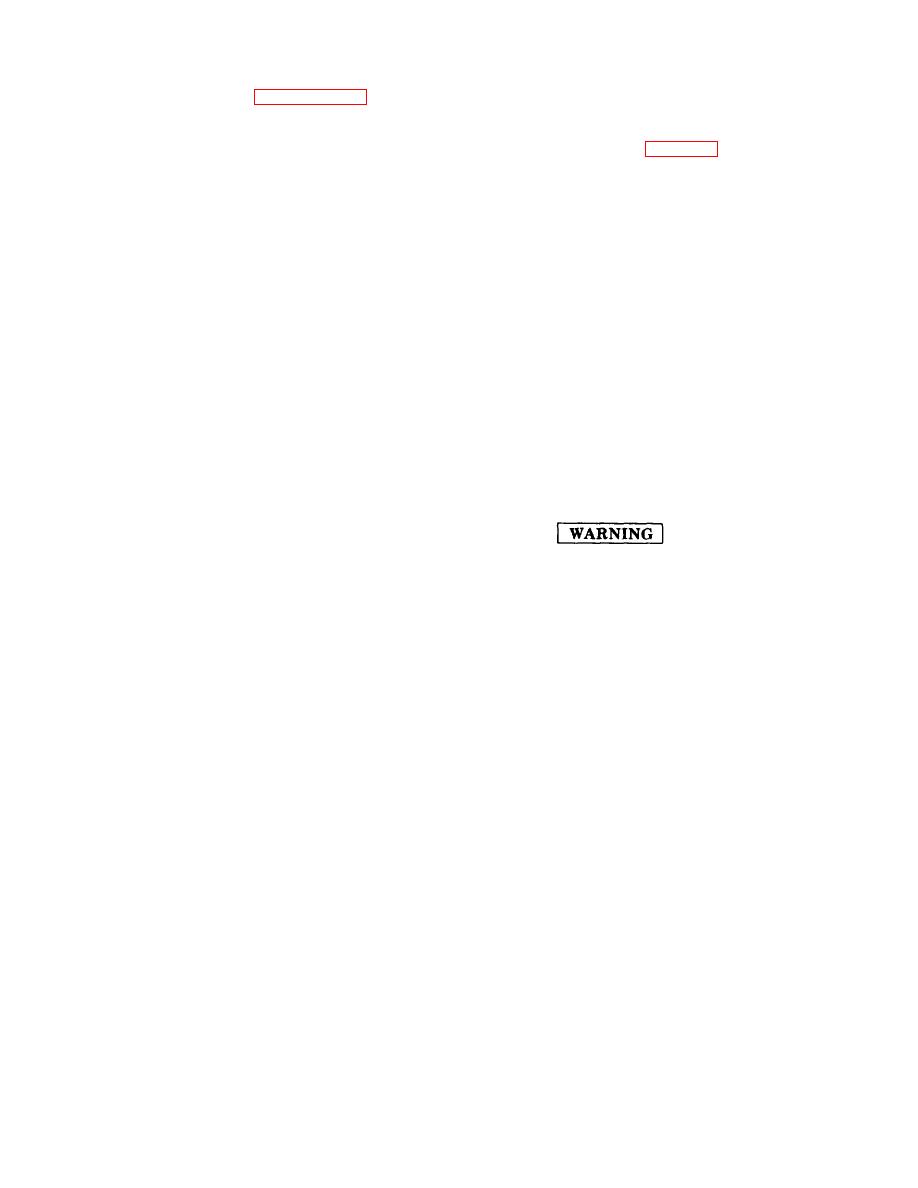 |
|||
|
|
|||
|
Page Title:
Secction XIX: MAINTENANCE OF REFRIGERATION SYSTEM |
|
||
| ||||||||||
|
|
 TM 5-4120-352-14
rect the trouble, report the conditioner to direct sup-
port maintenance.
test motor.
e. Install terminal box cover and scrrews. Con-
d. If any difficulty is indicated, remove screws
nect electrical connector. Refer to figure 4-5 and in-
and terminal box cover and check for damaged wir-
ing or loose connections. Repair damaged wiring
stall housing rear top cover.
and tighten loose connections. If this does not cor-
MAINTENANCE OF REFRIGERATION SYSTEM
Section XIX.
drator and receiver for damage.
4-50. General.
e. Tubing and Fittings. Inspect tubing for
Organizational maintenance of the refrigeration
kinks, cracks or other damage. Inspect fittings for
system is limited to inspection and testing of the
cracks.
system. Remove top covers, louvers and partially
remove junction box as required to gain access to all
parts of the system. Report any deficiencies to di-
4 - 5 2 . Testing System for Leaks.
rect support maintenance.
Check all piping, components, and connections of
the refrigerant system with a General Electric Type
H-2 Halogen Test Detector unit (or approved equal).
4-51. Inspection.
The detector shall be calibrated with a General
Electric LS-20 leak standard (or approved equal for
valves, expansion valves, pressure relief valves and
a pure refrigerant leak rate of 0.1 ounce per year.
pressure regulating valves for cracks or damaged
Any detected leaks exceeding this rate shall be re-
condition. Inspect capillary tubes for kinks or
ported immediately to direct support maintenance
breaks. Disconnect solenoid valve electrical con-
for correction and recharging,
nectors and check for coil continuity between termi-
nals.
Avoid bodily contact with liquid re-
for bent or broken fins and for damaged con-
frigerant and avoid inhaling refrig-
nections.
erant gas. Be especially careful that
c. Louver Control Actuator. Inspect cylinder
refrigerant does not come in contact
for cracks and damaged connections. Inspect control
with the eyes. In case of refrigerant
for bent or broken conditions.
leaks, ventilate area immediately.
4-44
|
|
Privacy Statement - Press Release - Copyright Information. - Contact Us |